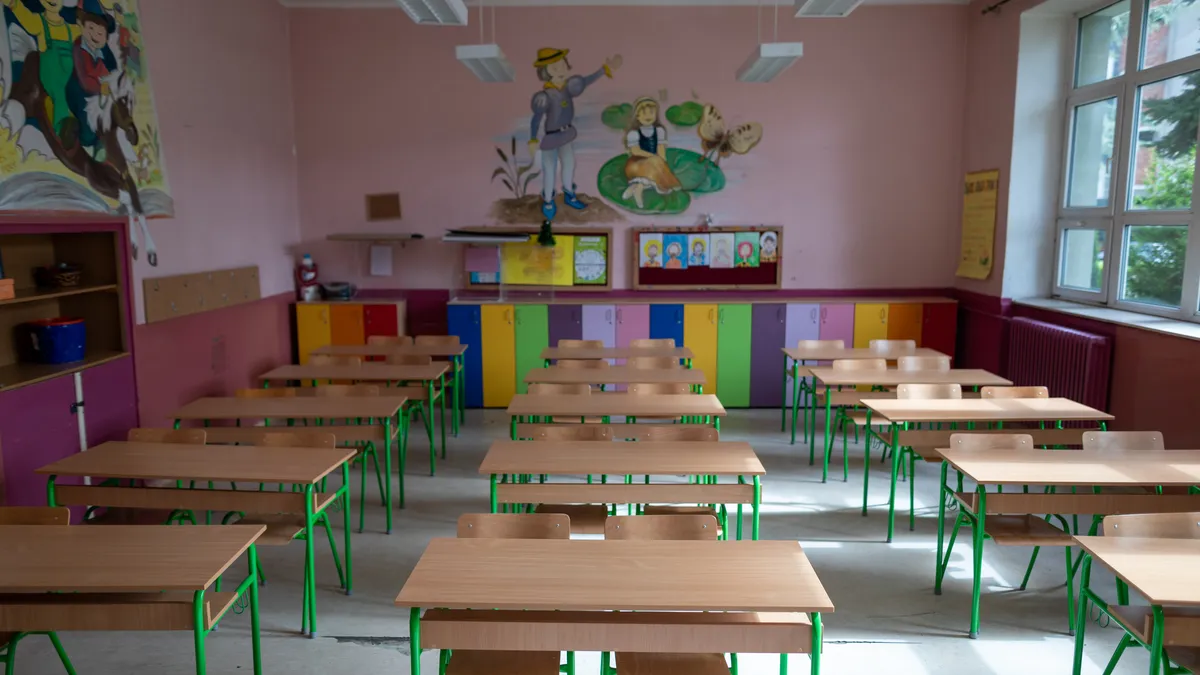Dive Brief:
-
Every state nationwide is experiencing a significant increase in high and extreme levels of chronic absenteeism across schools and districts, according to a nationwide analysis of 2021-22 federal data released Wednesday by Attendance Works and Johns Hopkins' Everyone Graduates Center. Chronic absenteeism is when students miss 10% or more of the school year for any reason.
-
What's more, a majority of the nation's school districts are seeing significant to extreme levels of chronically absent students, with at least 10% of their schools reporting chronic absenteeism. Fewer are experiencing only low or modest rates.
-
While chronic absenteeism is traditionally on districts' plates to address, “the unprecedented levels and intensity of post-pandemic chronic absenteeism" should push state agencies and policymakers to act, according to Attendance Works' analysis.
Dive Insight:
About two-thirds, or 66%, of enrolled students attended a school with high or extreme levels of chronic absence in the 2021-22 school year, according to Attendance Works, a nonprofit organization that works with schools and districts to address the problem.
These "elevated levels of chronic absence can easily overwhelm a district’s capacity to respond," said Robert Balfanz, director of Everyone Graduates Center, in a statement. Therefore, he added, state leaders and state education departments "are critical to ensuring districts are equipped" to improve attendance.
While chronic absenteeism during the pandemic affected students across all demographics, it especially impacted schools serving more students in poverty, Attendance Works found in an analysis last year.
Not only does irregular attendance affect grades, but it is also linked to dropping out, poor job outlooks, and greater involvement in the criminal justice system, according to research cited by the White House.
Recognizing this, last year the administration put out a call for an "all-hands-on-deck" approach to addressing chronic absenteeism.
In its most recent analysis, Attendance Works suggests that state agencies and leaders can do a number of things to help districts tackle the problem:
-
Make timely and accurate data publicly available and rely on it to create an action plan.
-
Collaborate to spread the word about the importance of attendance.
-
Limit punitive responses to truancy, like suspensions.
-
Create training and professional development materials for schools and districts with evidence-based approaches to reducing chronic absenteeism.
Some evidence-based approaches include increasing family engagement and student connectedness and addressing health and safety issues.
Attendance Works' executive director, Hedy Chang, has repeatedly stressed that the increase in absenteeism triggered by the pandemic is reversible.
In fact, preliminary state data suggests that chronic absenteeism is beginning to decline from its pandemic peak, but that it still remains at unprecedented levels, according to Chang's organization.
“We are pleased that attendance levels are moving in the right direction,” said Chang in a statement accompanying the new data. “But the exceptionally high chronic absence levels we see in most schools make it clear that improving student engagement and attendance to pre-pandemic levels requires a sustained effort over time.”








 Dive Awards
Dive Awards







